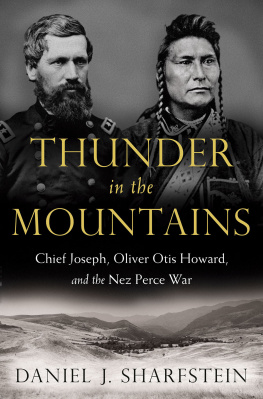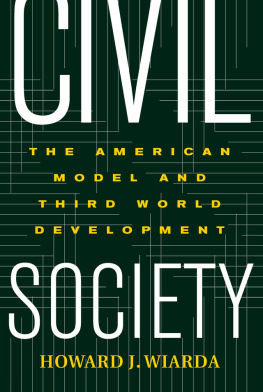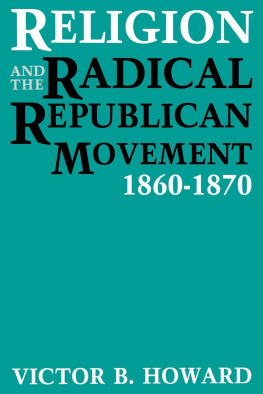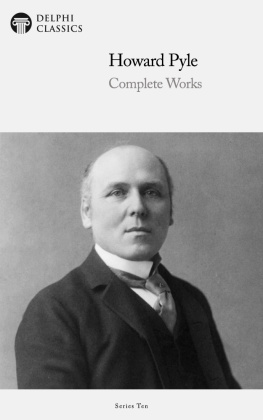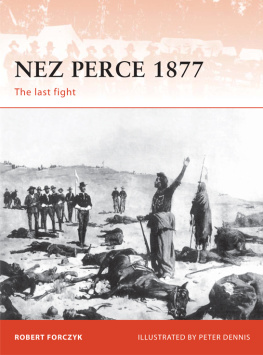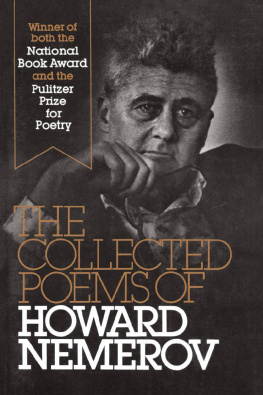
ALSO BY
DANIEL J. SHARFSTEIN
The Invisible Line:
A Secret History of Race in America

Copyright 2017 by Daniel J. Sharfstein
Maps by Bill Keegan
All rights reserved
First Edition
For information about permission to reproduce selections from this book,
write to Permissions, W. W. Norton & Company, Inc.,
500 Fifth Avenue, New York, NY 10110
For information about special discounts for bulk purchases, please contact
W. W. Norton Special Sales at specialsales@wwnorton.com or 800-233-4830
Book design by Barbara M. Bachman
Production manager: Anna Oler
Jacket design by Joe Montgomery
Jacket photographs: (General Howard) Library of Congress Prints and Photographs Division; (Chief Joseph) Photo by John H. Fouch, courtesy of Dr. James Brust; White Bird Canyon photographed by Daniel J. Sharfstein
The Library of Congress has cataloged the printed edition as follows:
Names: Sharfstein, Daniel J., author.
Title: Thunder in the Mountains : Chief Joseph, Oliver Otis Howard,
and the Nez Perce War / Daniel J. Sharfstein.
Description: First edition. | New York : W.W. Norton & Company, 2017. |
Includes bibliographical references and index.
Identifiers: LCCN 2016055352 | ISBN 9780393239416 (hardcover)
Subjects: LCSH: Nez Perc IndiansWars, 1877. | Howard, O. O. (Oliver Otis),
18301905. | Joseph, Nez Perc Chief, 18401904. | United States
Race relationsPolitical aspectsHistory. | Indians of North America
Civil rightsHistory19th century. | Political cultureUnited States
History19th century.
Classification: LCC E83.877 .S49 2017 | DDC 979.5004/974124dc23
LC record available at https://lccn.loc.gov/2016055352
ISBN 978-0-393-63418-1 (e-book)
W. W. Norton & Company, Inc.
500 Fifth Avenue, New York, N.Y. 10110
www.wwnorton.com
W. W. Norton & Company Ltd.
15 Carlisle Street, London W1D 3BS
For Ann, Saul, and Abe
CONTENTS
_______
It is natural... to wish to fight. We have always fought our enemies. We now engage in the biggest fight of allthe fight for our survival. If we must do it without weapons, so be it.
JAMES WELCH , Fools Crow
The new men of Empire are the ones who believe in fresh starts, new chapters, clean pages; I struggle on with the old story, hoping that before it is finished it will reveal to me why it was that I thought it worth the trouble.
J. M. COETZEE, Waiting for the Barbarians
_______
I N 1865, THE UNITED STATES WAS A BEACON OF LIBERTY AND equality to the world. It had fought a war to abolish human bondage, and Congress was committing to a reconstruction of the South that would enable millions of people who had been held as slaves to claim the rights and privileges of citizenship. The values that constituted the nation had new strength and clarity, animated by a government with an unprecedented capacity to make those values meaningful for every American.
Just thirty-five years later, in 1900, the possibilities of the prior generation had given way to an entirely different consensus. The government at every level was engaged in a vast project of sifting and sorting, of guarding the boundaries of unyielding hereditary privilege. Much of the country was consumed with separating the racesblack, white, yellow, red, brown. This segregation was not simply physical or geographical. Citizenship itself was divided and tiered. Being an American had no unified meaning. The very course of a lifewhether one could expect to survive infancy, go to school, learn to read, earn a living, and avoid arbitrary arrest, coerced labor, and sudden and violent deathdepended on whether one was white or of color, man or woman, rich or poor, native or foreign born. The countrys physical borders had become less places of entry than of exclusion, where the nations integrityoften explicitly defined as its white puritywas guarded, secured, and maintained. At the same time, the United States transformed itself into an imperial power conquering territories from San Juan to Manila, driven by ideas of the white mans burden and a hard, racialized sense of manifest destiny.
The nations pivot from emancipation to Jim Crow and empire set the terms for more than a century of conflict over the contours and substance of citizenship and the proper size, scope, and purpose of government. Like other stories central to the American experience, it can be told in many ways. We can conceive of it as the defeat of Reconstruction and the triumph of the forces opposing it, the promise of the 1860s curdling in the economic depression of the 1870s, the Norths commitment to liberty and equality eclipsed by its own fears and hatreds, as immigrants remade the cities and workers engaged in increasingly bitter struggles against newly mechanized industries controlled by vast corporations. Or we can imagine the transformation occurring at the end of the nineteenth century as less a rejection than an extension of Reconstruction, a national project that above all succeeded in expanding the size and reach of the federal government.
One path from emancipation to empire went through the West. While the Union Army was crushing the Confederacy, soldiers in blue uniforms were massacring Native Americans from Colorado to California and developing elaborate justifications for the bloodshed. In the decades that followed, the West became a proving ground for conquest, the site of a massive exercise of state power to benefit one group at the expense of others. Understanding how a nation forged by Civil War and Reconstruction came to see the Westand how some of the same people who fought for one vision of America became the architects of a seemingly antithetical visionis crucial to understanding the divisions that define modern America.
Thunder in the Mountains tells a story of the turn in American values and the clash over the nature of government through the lives and battles of two people, a general named Oliver Otis Howard and Chief Joseph, a leader of a band of Nez Perce Indians in the Far Northwest. It explores their continuing legacy through the stories of two men who were intent on remembering them both, a lieutenant named Charles Erskine Scott Wood and a Nez Perce warrior named Yellow Wolf. General Howard and Chief Joseph came from opposite sides of the country, worshipped competing gods, and saw the worldtime, space, and historythrough different eyes. But after their paths intersected in the mid-1870s, together they came to embody some of the defining struggles of the American experience. Their ideas and actions inspired generations of people to consider who belongs in America, what belonging should mean, and how liberty, equality, and citizenship can assume meaningful forms alongside a government capable of exerting total control over individuals. Their story plumbs the nature of political struggle in the United States and the ability of outsiders and dissenting voices to speak to and move sources of power that can seem remote and impossibly large, omnipresent yet invisible. In many ways we continue to live in their world.
General Howard emerged from the Civil War to play a key role in Reconstruction. As head of the Freedmens Bureau, the first big federal social welfare agency in American history, he led the governments efforts to support and protect millions of newly freed people; Howard University was named for him. As Reconstruction collapsed, he rejoined the active duty military and was sent to command army forces in the Northwest. Although the nations values were changing, Howard was determined to stay in government and represent its shifting interests. He did not see his actions in the West as a betrayal of Reconstruction, but he was marked by Reconstructions failures as much as its successes.
Next page
